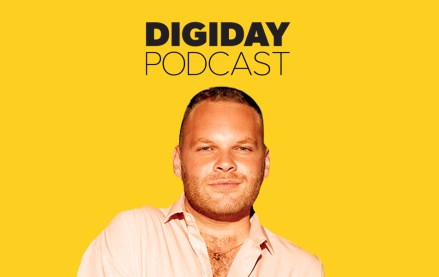Connect with execs from The New York Times, TIME, Dotdash Meredith and many more
Research: 53 percent of publishers are using first-party data for audience insights

As publishers, from digital players to national and regional titles, grapple with paywall trials, metered access and subscription models, it’s evident there’s no singular approach to content monetization.
New research, of more than 100 media businesses in the US and UK, shows that more than half say the biggest contributor to growth will be subscriptions, as revenue diversification beyond advertising ramps up.
However, monetizing content at a time when advertising revenue is coming under increasing pressure isn’t just about building a paywall. In the pivot-to-paid, publishers have a wealth of options available to begin to develop a lasting two-way relationship with their audience that goes beyond simply putting a barrier between users and the content that they want to access.
Is a paywall the way?
“It’s the best way to monetize the relationship,” says Julie Hansen, CEO US of subscription-based language learning app and e-learning platform Babbel and former President and COO of Business Insider. Hansen says “asking someone to pay isn’t necessarily a relationship builder” and adds that “the best way to create a strong habit among a media consumer is to create great content that suits their needs and deliver it in the most convenient way possible”.
Denis Haman, former CTO at Which? believes there are also generational differences which manifest in an increasingly sophisticated audience. He says: “I may see a value in subscribing to The Times, but a 20-year-old doesn’t because they’ve never experienced it. The power of the brand is good, but it’s not sufficient. You have to build that affiliation with the brand and you have to demonstrate why your product is worth paying for. And you can’t do that if you have a very simplistic, disengaged, in-or-out approach to your audience.”
Value is an important part of monetization – it’s about the perceived value of publishers’ content and the reader’s value to the business. Two-thirds of publishers believe the ability to understand and manage the customer journey is key to maximizing the revenue potential of their audience.
Tech complexity
Organizations looking to diversify revenue often face technical and structural challenges and a plethora of options for managing the process. This can make decisions difficult and progress slow. The research also reveals that technical complexity and inflexible tools represent the two biggest barriers to publishers achieving a more agile and sophisticated monetisation mix.
“The speed at which you can implement a change, the confidence you have in the data that’s associated with that to continue to make relevant changes and the cost that’s associated are key things that all publishers in our space will be very aware of and focused on,” says Tony Skeggs, chief technology and information officer at PEI Media.
While investment and the cost of technology is obviously a considered decision for many businesses, the research shows that complexity and inflexible tools and technology rank higher than legacy systems, internal buy-in and the lack of data and insight, which suggests a tech and expertise issue rather than a business’s ability to get started.
While implementing a dynamic paywall for Which?, Haman says everything he needed to change required technical intervention but he made it his mission to remove this as an obstacle. He says: “For us to be able to react to a breaking news story, for instance, Whirlpool announces that they are going to recall all of the tumble dryers. For us, at the click of a button, to unlock all the Whirlpool related content and give it away for free as part of our charitable mission, well that’s massive.”
“As opposed to going into a backlog for developers to make changes and to make an exception for something,” he adds. “The ability to be agile and responsive to whatever is happening, that in itself has a tremendous amount of value.”
Subscriptions and e-commerce are a growth area for publishers, as revenue diversification beyond advertising and events ramps up. But paid content strategies rely on a balance between monetizing an audience and building one. With many media businesses unsure if their monetization mix maximizes customer value, unearthing both content and customer lifetime value is an important starting point for publishers.
James Henderson, CEO at Zephr, believes the strategic approach is multifaceted: “As the expectation generation grows up, consumers increasingly demand relationships with brands on their own terms. They want choice, flexibility and control of their data. The subscription economy just got personal – as paywalls become yesterday’s news with their one-size-fits-all model, we’re entering a new era where publishers should be able to deliver a multitude of different registration, trial, subscription and retention approaches tailored for different types of customers – easily, intelligently and dynamically.”
Click here for full access to the report, including Digiday research and further insight from Which?, PEI Media, Babbel and The World Association of Newspapers and News Publishers.
More from Digiday

In Graphic Detail: Inside the state of the creator economy industrial complex
The creator economy might have started out as an alternative to traditional media, but is becoming more and more like it as it professionalizes.

Ad Tech Briefing: How ad tech underpins the fate of Madison Avenue’s ‘Wedding of the Year’
The ‘brand safety’ debate is threatening to derail the IPG-Omnicom merger, while questions are raised on the integration of Annalect and Acxiom.

‘Embrace your chaos’: How creator Brandon Edelman is trying to plan for the future
While creators are now key to marketing budgets, their longevity in the fast-paced digital world is a pressing concern. This episode explores how TikToker Brandon Edelman is navigating that challenge, building a sustainable career by diversifying his content and focusing on brand partnerships.





